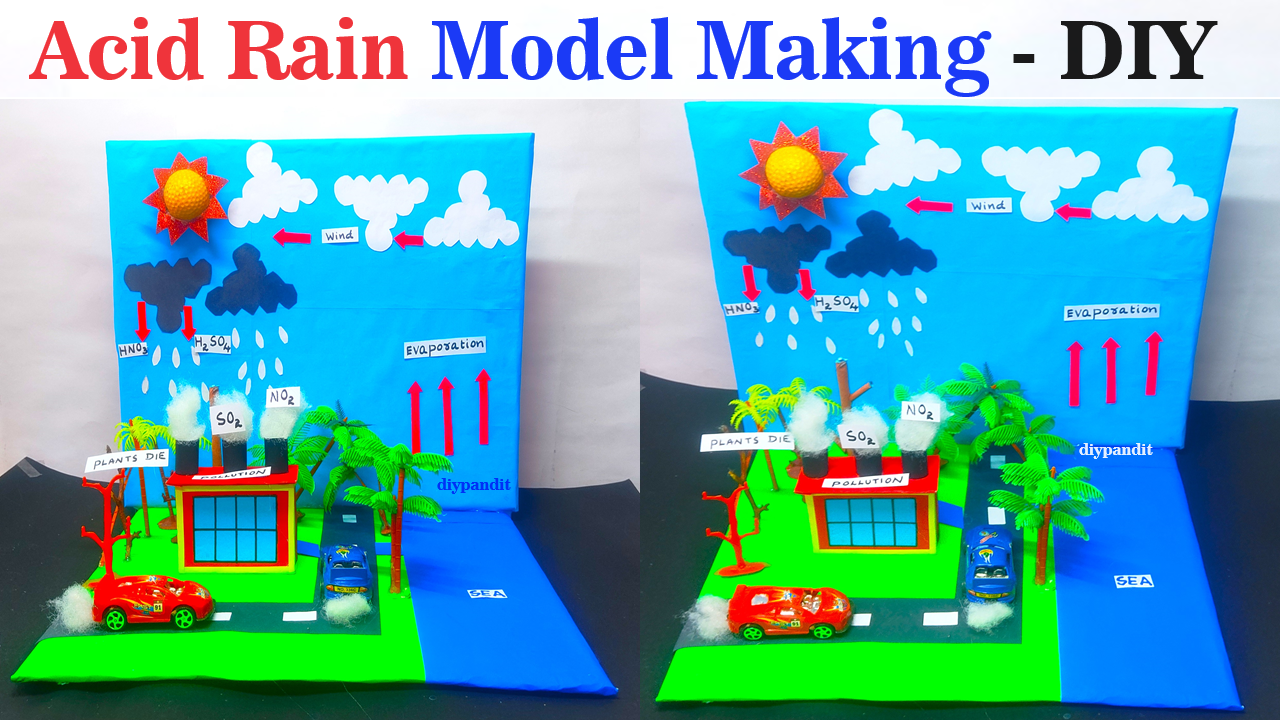Creating an acid rain model for a science exhibition can help illustrate the harmful effects of environmental pollution.

Here’s a simple way to make one using cardboard, colors, and a ball for the sun decoration:
Materials Needed:
- Cardboard
- Colors (blue, white, green, yellow, black)
- Small ball (for the sun)
- Scissors
- Glue
- Spray bottle
- Vinegar (to simulate acid rain)
- Optional: cotton or sponge (for clouds)
Instructions:
- Prepare the Base:
- Cut a large piece of cardboard to serve as the base for your model. This will represent the Earth’s surface.
- Create the Environment:
- Use colors to paint the cardboard base. Use blue for the sky, green for land areas, and white for clouds. You can also add details such as rivers, lakes, and mountains.
- If desired, use cotton or sponge to create 3D clouds by gluing them onto the painted sky area.
- Decorate the Sun:
- Use yellow color to paint the small ball, which represents the sun. You can also add details such as sunspots or rays using black color.
- Model Acid Rain:
- Fill a spray bottle with vinegar to simulate acid rain. Vinegar contains acetic acid, which can represent the acidity found in acid rain.
- Spray the vinegar onto the painted surface of your model to simulate the effects of acid rain.
- Observation:
- Observe how the vinegar reacts with the painted surface. The acidity in the vinegar may cause colors to fade, cardboard to weaken, or other visible effects similar to those seen in areas affected by acid rain.
By following these steps, you can create a visually engaging acid rain model for your science exhibition, effectively demonstrating the environmental consequences of pollution and the importance of mitigating human impact on the planet.

